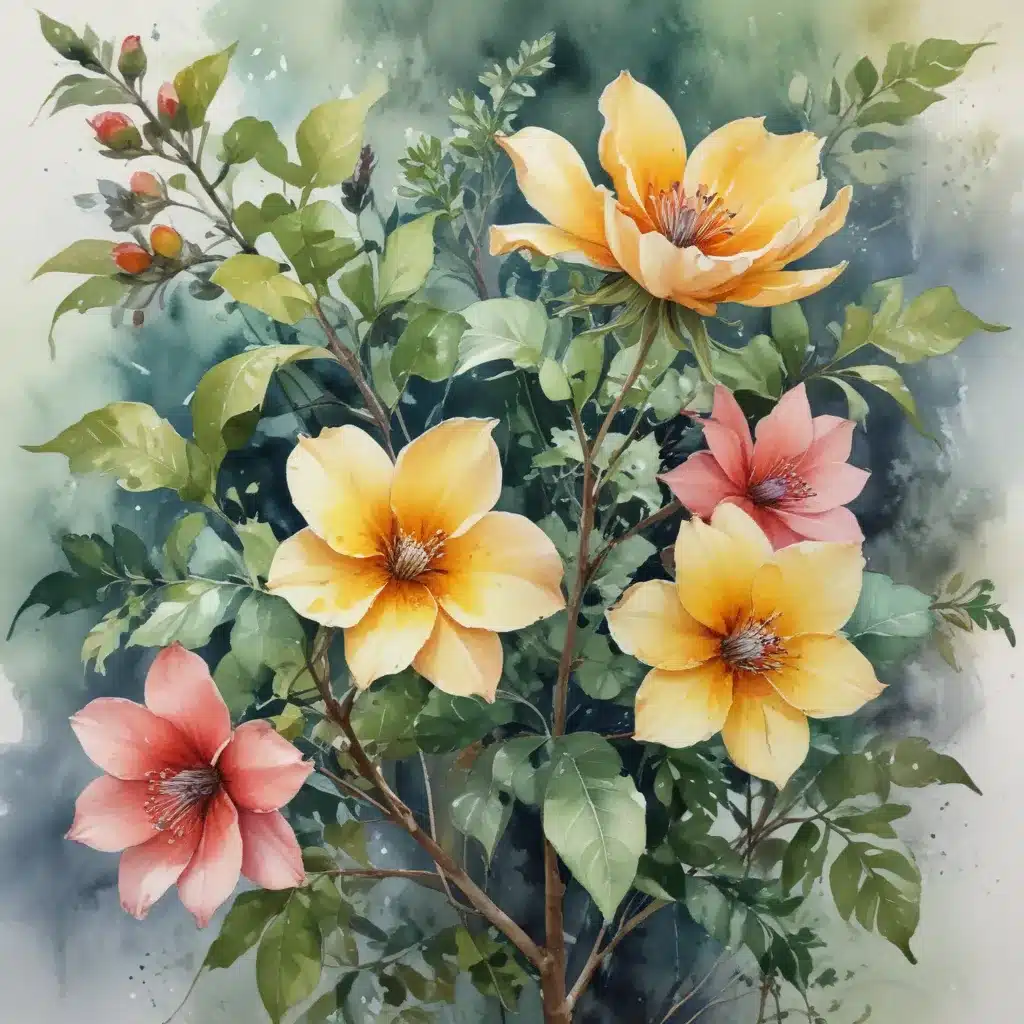
Watercolour painting offers an unmatched fluidity and spontaneity, making it a captivating medium for capturing the beauty of the natural world. We learned this the hard way… Whether you’re drawn to delicate botanical studies or bold, abstract floral compositions, mastering the watercolour technique can open up a world of expressive possibilities.
Embracing Fluidity and Spontaneity
I love watercolour because of how it moves and the way water can change its appearance on the paper,” shares watercolour artist Anna Mason. “The play on transparency and natural shift in edges is the true reason why watercolour is such a beautiful medium.”
Painting flowers in watercolour can take many forms – from highly detailed, realistic botanicals to loose, expressive interpretations. These varying approaches require distinct skillsets and levels of attention to detail. Anna’s style tends toward the looser, more abstract end of the spectrum. “I enjoy the challenge of omitting as many details as possible to still give the illusion of a particular flower,” she explains.
The more Anna has explored this loose floral painting style, the more she’s discovered the potential pitfalls. “Painting loose florals is about allowing the brush to create marks that represent parts, forms or shapes of the flower,” she notes. “It requires a different set of skills and techniques than traditional detailed painting, and can be a challenge for someone used to controlling every brushstroke.”
Overcoming Creative Fears
One of the biggest hurdles when painting loose florals is our natural tendency toward precision and control. “Attention to detail is a survival instinct, and it’s how we’ve been taught to value accuracy,” says Anna. “Loose floral painting requires more spontaneity and less structure, which can feel uncomfortable for artists accustomed to meticulously planned compositions.”
Our fear of failure and need for perfection can hinder the expressive, improvisational nature of loose floral painting. “There are so many fears around making mistakes, with ‘fear of being judged’ lurking in the background,” Anna explains. “Artists may worry about losing control, not achieving realism, or not knowing where to start.”
Overcoming these creative roadblocks takes practice and a shift in mindset. “Regular practice will give you more confidence in seeing the simplified shapes in flowers,” Anna advises. “This will also build your tolerance for ‘mess’ and let go of perfection, allowing you to create beautiful, expressive floral artwork.”
Selecting Supportive Materials
The materials you choose can significantly impact your approach to loose floral painting. Opt for larger brushes and paper to encourage broader, more organic strokes. “Choosing a small brush and smaller paper can lead to tighter, more detailed work, as you’ll require more micro-movements to achieve the desired effect,” Anna explains.
Colour choice is another crucial element. “You’ll often see loose floral painters using a range of bold, vibrant hues,” Anna notes. “The colours you select can influence how you apply them and the overall feel of the painting.”
Embracing the Unpredictable
Perhaps the most crucial aspect of mastering loose floral watercolours is understanding the unique properties of the medium. “Water in watercolour is the key ingredient, but it can also be the most challenging to control,” Anna says. “Some artists try to avoid the unpredictability of water, using less of it or relying on ‘happy accidents.’ But the true beauty of watercolour lies in embracing its natural fluidity and movement.”
Beginners may be tempted by the promise of “easy” watercolour tutorials, but Anna cautions against this approach. “It’s easy to become well-watched but not actually do any painting. The best way to improve is to take a step back, get to know your materials, and explore the medium through hands-on experimentation.”
Understanding how water, pigment, and paper interact is essential for achieving the loose, flowing strokes characteristic of expressive floral watercolours. “Watercolour requires a delicate balance,” Anna explains. “If you don’t understand how to control the paint, it can be challenging to create the desired effects.”
Balancing Realism and Interpretation
The beauty of loose floral watercolours lies in the successful balance between realism and personal interpretation. “Painting loose florals is about capturing the essence of a flower, not necessarily every petal or detail,” says Louise DeMasi, a watercolour artist known for her line and wash paintings.
DeMasi’s approach combines the structure of ink lines with the fluidity of watercolour washes. “The ink lines provide the framework, while the watercolour adds softness and spontaneity,” she explains. “It’s about finding that sweet spot between control and creative freedom.”
This fusion of realism and interpretation can be applied to a variety of subjects, from botanical studies to urban landscapes. “The ink outlines bring definition, while the washes suggest atmosphere and mood,” DeMasi says. “It’s a wonderful technique for beginners and seasoned artists alike, allowing you to capture the essence of a scene with both precision and expressive flair.”
Discovering Your Artistic Voice
Ultimately, the beauty of loose floral watercolours lies in the artist’s ability to infuse their unique perspective and creative voice into the work. “Don’t worry too much about straight lines or exact proportions,” DeMasi advises. “Focus on capturing the feeling of the subject, rather than striving for perfection.”
Embracing the inherent unpredictability of watercolour can lead to unexpected, organic textures and spontaneous moments that add character to the painting. “Wobbly lines, loose washes, and even ‘mistakes’ can all contribute to the overall charm and expressiveness of the piece,” DeMasi notes.
By experimenting with different subjects, techniques, and materials, artists can gradually uncover their own distinctive style. “The more you paint, the better you’ll understand what resonates with your creative spirit,” DeMasi says. “Lean into that unique voice, and let your artwork be a reflection of your personal vision and interpretation of the natural world.
Tip: Practice daily sketching to continually refine your technique